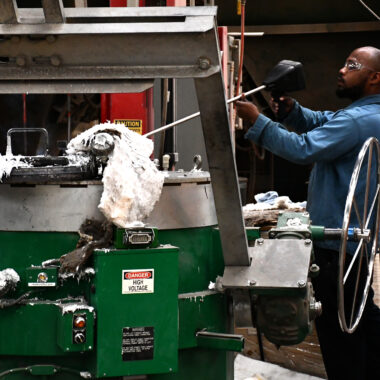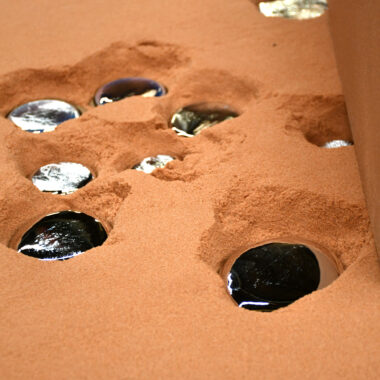Making Best Use Of Efficiency: Advanced Aluminum Casting Solutions Unveiled
Making Best Use Of Efficiency: Advanced Aluminum Casting Solutions Unveiled
Blog Article
Dive Into the Globe of Light Weight Aluminum Spreading: Understanding the Different Approaches
Aluminum spreading is a basic process in the manufacturing sector, with various approaches utilized to create precise and elaborate elements. Understanding the different techniques made use of in aluminum spreading can offer important understandings right into the capabilities and constraints of each approach. From the standard sand spreading method to the advanced die casting process, each method offers one-of-a-kind benefits relying on the requirements of the project. Checking out these diverse methods can use a comprehensive sight of the possibilities within the globe of aluminum casting and exactly how each strategy adds to shaping the contemporary manufacturing landscape.
Sand Casting Approach
Sand casting, a widely-used approach in aluminum spreading procedures, entails producing molds made from compressed sand for pouring molten steel. This approach is very functional and economical, making it a prominent choice for different sectors. The process starts with the development of a pattern, commonly made from wood or steel, which is then pushed into the sand to leave a perception. The sand combination, usually silica sand blended with a binder like clay, is snugly packed around the pattern to form a mold and mildew dental caries. As soon as the mold prepares, it is firmly positioned in a flask and molten aluminum is poured right into the cavity.
After the metal has actually cooled down and solidified, the sand mold is escaped to disclose the light weight aluminum casting. Sand casting enables the manufacturing of complicated shapes and big components that may be expensive or hard to produce using other methods. It is also a lasting method as the sand can be reused and used several times, decreasing waste in the spreading process.
Long-term Mold Strategy

One considerable advantage of the Long-term Mold And Mildew Strategy is the enhanced dimensional accuracy it uses. The metal mold enables for tighter tolerances and finer information in the last aluminum spreadings contrasted to sand casting techniques. This precision makes it a recommended option for applications where tight dimensional control is essential, such as in the aerospace and automotive markets.

Die Casting Process

Financial Investment Casting Approach
Utilizing an accuracy spreading approach, Financial investment Casting Strategy involves developing detailed light weight aluminum parts by pouring liquified metal right into a ceramic mold. This process, likewise understood as lost-wax spreading, starts with the development of a wax pattern of the preferred part (aluminum casting).
Investment casting is frequently used for making components in markets where tight tolerances and detailed layouts are called for, such as aerospace, auto, and clinical devices. The convenience and precision of the Investment Casting Strategy make it More Help a beneficial technique in the globe of light weight aluminum spreading.
Lost Foam Casting Method
Having actually checked out the detailed accuracy of Financial investment Casting Approach, the focus currently shifts to the innovative technique of Lost Foam Spreading in aluminum component manufacturing. Lost Foam Spreading, also referred to as evaporative pattern spreading, is a modern-day strategy where a foam pattern of the wanted component is produced and afterwards covered with a refractory material. The covered foam pattern is then buried in sand, and molten aluminum is put right into the mold and mildew. As the steel fills up the mold and mildew, the foam vaporizes due to the warm, leaving a clean cavity in the shape of the wanted component.
In Addition, Lost Foam Casting is a cost-efficient process as it lowers the requirement for cores and permits for the production of light-weight parts. In spite of its benefits, Lost Foam Casting needs mindful control of the casting process to ensure and stop defects high quality read this article parts.
Conclusion
Finally, light weight aluminum casting provides a variety of techniques such as sand casting, irreversible mold method, pass away spreading, investment casting, and shed foam spreading. Each approach has its own advantages and applications, making light weight aluminum casting a functional and widely used process in different sectors. Understanding the differences between these techniques is critical in selecting the most suitable casting method for certain manufacturing needs.
Sand spreading, a widely-used approach in aluminum spreading procedures, involves creating molds made of compacted sand for pouring molten steel. aluminum casting.The Permanent Mold Technique, like sand casting, is another prevalent method employed in aluminum spreading procedures, supplying distinctive benefits in terms of mold and mildew reusability and dimensional precision. The metal mold informative post allows for tighter tolerances and better information in the last light weight aluminum castings compared to sand spreading approaches. The 2 primary types of die casting are cold chamber pass away spreading and hot chamber die casting, each ideal for various kinds of aluminum alloys.In conclusion, light weight aluminum spreading uses a range of methods such as sand spreading, irreversible mold and mildew technique, die spreading, investment casting, and shed foam casting
Report this page